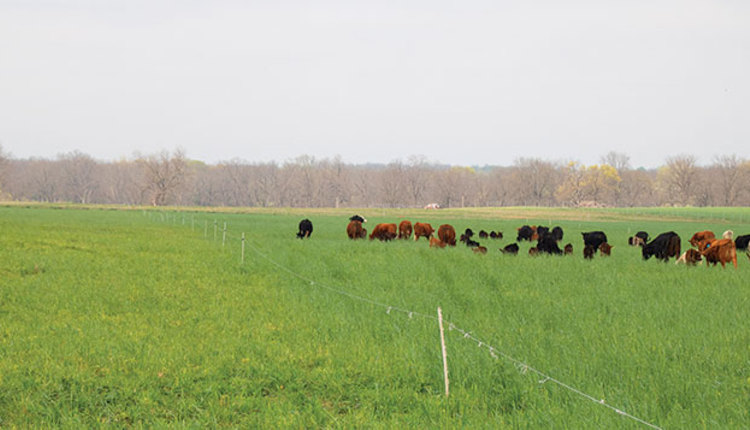
When it comes to prepping for winter survival and spring regrowth of forages, fall is the most important among the four seasons. During this period, plants store energy reserves in the form of carbohydrates and proteins in their crowns and roots. This is also the time shoots and growing points form on plants. Subsequently, as temperatures become cooler and daylight hours lessen, nutrient uptake also slows.
Canadian rancher and grazing consultant, Steven Kenyon, pointed out what happens early on in the grazing season is the key to getting the most out of pastures during these critical fall changes.
“What happens in May and June will determine the rest of the season,” said Kenyon. “The most economical winter grazing option is intensive rotational grazing of your summer pastures.”
Extend the grazing season
Since 2000, Kenyon has run a custom grazing business in Alberta, Canada. He also teaches sustainable grazing management to producers at conferences, seminars, and courses across Canada and the United States. He currently runs just over 1,200 head of livestock on 3,500 acres of leased land. By using extended grazing techniques, such as stockpiling, swath grazing, crop residue grazing, and bale grazing, he is able to pasture his cattle year around.
Kenyon explained good grazing management using a well-managed rotational grazing system not only lends itself to better margins during the growing season but also reduces fall and winter feeding costs by allowing producers to graze later into the dormant season. Despite having a short growing season in northern regions like Alberta, with good management, Kenyon said, it is possible to extend the grazing period quite a bit.
“If we have managed our grass well during the summer and we have good quality ‘stage two’ grasses when the killing frost hits in September, we end up with good-quality standing hay in our pastures,” said Kenyon. “This can be grazed well into the winter and in most cases is high-quality feed.”
Even if winter comes early, Kenyon said, snow will just help to provide protection and preserve forage quality.
“In a sense, the killing frost is my mower and the snow is my hay shed,” said Kenyon. “I’ve had green grass under the snow in January with 13 percent protein — a great ration for almost any type of livestock.”
Don’t overgraze
Along with good management, Kenyon noted, pasture managers should do their best not to overgraze during the grazing season.
“Overgrazing occurs when a plant is defoliated at a time when the energy stores in the plant are depleted,” said Kenyon. “Simply put, it is a matter of timing. We need to manage both the grazing period and the rest period together so that we don’t graze a plant when it doesn’t have enough stored energy to grow.”
According to Kenyon, overgrazing can also be caused by a killing frost. As he stated earlier, for his ranch in Busby, Alberta, this usually happens sometime in mid-September. “If we consider the killing frost in the fall as a grazing (or hay cut) and it hits when plants have an empty fuel tank, they are overgrazed,” said Kenyon. “They are going into winter with low energy reserves.”
To prevent overgrazing, Kenyon suggests changing the time of year a paddock is grazed in each growing season. For example, this might be by rotating animals in the opposite direction one year or starting at a different paddock another year. “By changing up the timing, we can reduce the overgrazing on individual paddocks,” said Kenyon.
In addition, providing adequate rest periods and leaving enough stubble post-grazing (at least 6 inches) during the fall will help to catch snow, providing protection and leaving enough vegetative matter on plants to regrow come spring.
Some specific fall grazing strategies Kenyon recommends include:
- Stockpiling grass in lowlands — Most riparian area plants are not very nutritious in summer due to high water content. Save them for fall or winter grazing instead. They will dry out and be easier to get at on frozen ground.
- Residue grazing — Seek out area crop producers to utilize chaff, straw, or crop residue as a grazing source.
- Swath grazing — In regions where it’s a good fit, cutting hay and raking it into swaths to be strip grazed later in the year can be a great alternative.
- Bale grazing — Similar to swath grazing, this grazing method involves utilizing harvested forages in the field. Bales are rationed off with electric fencing. If done right, this can lower labor and equipment costs for the fall and winter grazing periods.
This article appeared in the August/September 2019 issue of Hay & Forage Grower on page 23.
Not a subscriber? Click to get the print magazine.

